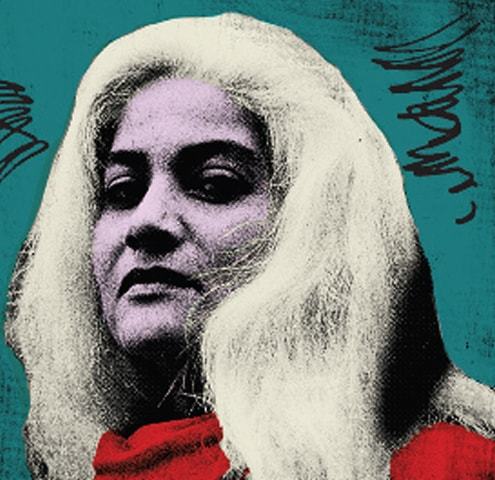
The most mesmerising feature of the night sky is the moon, when it first shows itself as a fine sliver for a few minutes after sunset, when it lies on its side like a slice of lemon, in its breathtaking fullness on the 14th day of the lunar cycle. We are treated to blue moons, blood moons, harvest moons and supermoons. Sometimes, we see the old moon in the new moon’s arms. It has a mysterious dark side we never get to see.
From the dawn of civilisation, myths and folklore have grown around the magical qualities of the moon. From the healing properties of absorbing the rays of the full moon, to its ability to transform humans into werewolves, the moon is both loved and feared. The full moon affects nature from coral reproduction, flowers that only bloom under the full moon, to affecting human emotions. The moon has inspired lovers, poets, science fiction writers, filmmakers and artists.
Moon deities wielded great power in ancient Egypt, Greece, Rome, the Americas, India, Africa, China and Japan. Japanese aristocrats would gather for Tsukimi or moon-viewing, reciting poetry under the full moon. In pre-television days of Pakistan, when people sat outdoors at night, the full moon inspired lyrics such as ‘Chaudhvin ka chaand ho, yaa aaftaab ho,’ [Are you the full moon or the sun?].It was common to call people Chanda, or liken the beloved’s face to the glow of the full moon.
The earliest calendar was lunar, found in Lascaux Caves (15,500 BC). As agricultural production developed, the solar calendar was created to define seasons. The Gregorian solar calendar, established by Pope Gregory XIII in 1582, heralded modernism — a world that is financially driven rather than spiritually — and increasingly interdependent. Europe adopted it from the 16th to 18th century, spreading it to their colonies, China, Russia, the Ottomans and Greece in the early 20th century, and Saudi Arabia in 2016. Think tanks in Britain highlight the need to further fine-tune the calendar so that public holidays fall on weekends, allowing the gross domestic product to increase. Time is placed at the service of Mammon (material wealth).
The lunar calendar accepts uncertainty, remains connected to nature and spirituality.
Many countries maintain parallel traditional calendars — Muslim countries, Israel, India, Japan, and China amongst others. If the solar calendar introduces stability, predictability and rationality, the lunar calendar accepts uncertainty, remains connected to nature and spirituality. Time dwells asymmetrically in a flexible container.
Much has been written about the science of lunar activity and its physical impact on humans, plants, animals and insects. Less information exists on how it affects social behaviour and cultural expression. The uncertainty of the new moon, appearing on the 29th or 30th of the month, means decisions and plans can be altered at the last minute, such as the end of Ramazan. Does this follow through in general reliability and time-keeping?
Asymmetry is an aesthetic principle in Japanese compositions, transferred to European Impressionist painters and the Bauhaus style. Asymmetry is also an interesting feature of Arab musical rhythms in contrast to the predictable rhythms of Western music, influencing Spanish and North African music and jazz. Indian classical music employs subtle forays of musical notes or sur into komal (flat) and teevar (sharp) variations.
Natural evolution prefers disordered, asymmetrical patterns over symmetry and uniformity. As the world staggers under the threat of climate change, we need to listen to nature rather than impose upon it.
Science journalist Ferris Jabr reminds us, “From the beginning of life on this planet, the moon profoundly shaped the rhythms of Earth and its collective life forms. The moon, our silver sister, was always right here with us, awash in our seas, pooling in our eyes and written into the planet’s very DNA.”
Durriya Kazi is a Karachi-based artist and heads the department of visual studies at the University of Karachi
Email: durriyakazi1918@gmail.com
Published in Dawn, EOS, December 8th, 2019













































